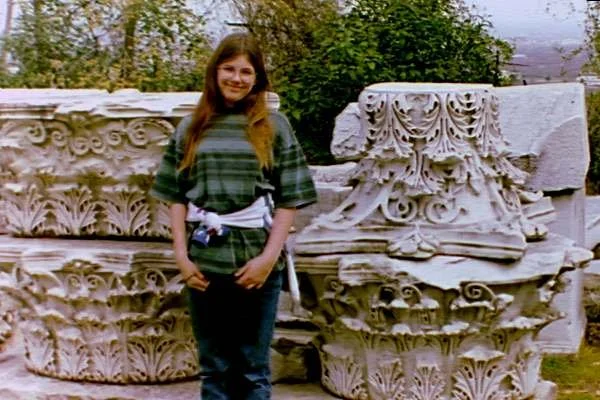Places in Acts – Berea – Acts 17:10,13; 20:4
My daughter (about ten years ago!) explored Berea with dad.
Berea
Acts 17:10,13; 20:4
The city of Berea (modern Veria) was founded in the Archaic Period in the southwestern part of Macedonia, some 73 km west of Thessalonica. Ruins extend to 700 BCE (though scarce), when the city probably began as an agricultural market center. The founders were no doubt Thracians and Phrygians driven out by the “Makadne” in one of the Archaic transitions. The mythological beginning of the city is ascribed to a daughter of Ocean, the Titan that married Thetys (another Titan) and bore the “Oceanids” (Nymphs of the great rivers). The myth probably recalls the main reason the city was founded on this location. The city is set on a ridge with the well-watered nearby basins of the Eliakomon and Axios Rivers. The alluvial plains north of Mount Vermio were (and still are) still rich in apple, peach and pear orchards. Scholars believe the city may have reached 60,000 to 70,000 people at its zenith (about twice its modern population), but this is speculation. A major electric dam on the Eliakomon River today provides industrial sector work today, and the are is still considered reasonably wealthy.
Extensive excavations have not been attempted in the area. The major artifacts in the local museum, though quite interesting, are mainly funerary monuments. A few sections of the ancient city wall are displayed on the edges of the city. With few physical finds, scholars are left to seek information from ancient historians. Thucydides (the Classical period general that was expelled from Athens after losing to the Persians) referred to the place. The city opened their gates to Rome after the Battle of Pydna (168 BCE) and was taken by the Romans without resistance. Under the Roman administration, the city became well populated, partly due to the extension of the Egnatian Way through the region of Berea to its north.
Long after Paul’s preaching the Christian community thrived in the city. One tradition says that Sopater, son of Pyrrhus, was the first convert of the Berean church (mentioned in Acts 20:4). The other (better established) tradition is that of the “Synaxar” (Orthodox Calendar of the Saints) that refers to Karpus (one of the 70 Disciples) as first Bishop of the city. Much later, the Middle Ages brought great prosperity to the region. Indeed, the city was considered one of the most important in the region, with several beautiful churches including frescoes as old as the C12 CE. More than 37 churches of the period have been identified, but scholars believe more than 100 churches existed in the period!
Paul fled in the night from Thessalonica to Berea (Acts 17:10) and taught in the synagogue there (during the Second Mission Journey). In the synagogue he found people who were eager to receive the Gospel and compare it with the Hebrew Scriptures. The Berean search of the Scriptures daily became an example to early Christians, and the name was carried to later churches everywhere. Luke notes that many believed, and includes that “honorable women which were Greeks, and of men, not a few” (Acts 17:12) came to Jesus. The reception was probably a true respite to the Apostle and his team, but it was short-lived. Jews that did not believe the message of Jesus preached by Paul came from Thessalonica when they learned Paul continued ministry there. They came and stirred up the people against Paul, causing him to once again flee, this time to Athens. Paul left Silas and Timothy to care for the believers in Berea and in Thessalonica for a short while.
In the modern city stands a “Triptych monument” stands in reminder of Paul’s work. The monument includes three steps that were removed from a salvage dig at a nearby school property. The steps were reputed to have been from the location of the ancient synagogue. The display is made of colorful mosaic tile and displays three panels: 1) The Macedonian man vision; 2) Paul; 3) The address to the Bereans.


